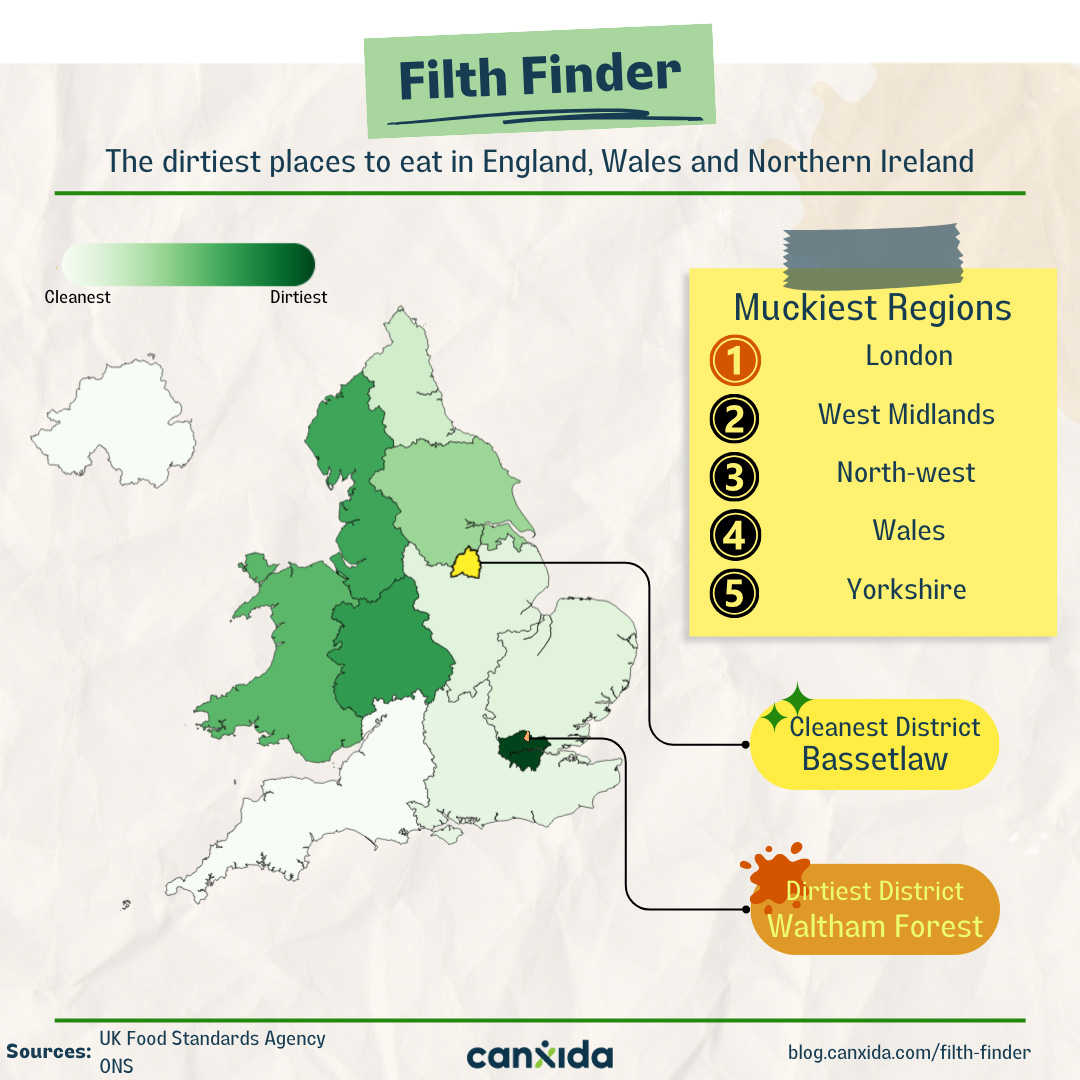
Ordering meals, especially from somewhere you haven’t eaten before, can be a gamble. And it turns out you’re not just gambling on whether the dishes you order will be tasty, but also whether they’re clean – or even safe to eat.
Last time we established that in the UK, there are half a million unclean meals eaten every day, and almost 30,000 of them are absolutely filthy, made in restaurants rated 0/5 for hygiene.
So, where are these dirty restaurants? Where is the layer of grime the thickest? And which regions kitchens are more ‘blech’ than bleach?
We delved into government FSA data to find out.

Think of a ‘dirty restaurant’ in the UK and you might be conjuring images of late-night kebab shops on busy street corners, spilling out with drunken university students. And you might not be wrong.
Our research shows restaurants & catering businesses in cities are on average less clean than their rural counterparts – and London tops our chart as being the dirtiest region in the UK to buy a meal.
Dirtiest of all is Waltham Forest in North London, earning itself the title of the UK’s dirtiest district with almost 1 in 5 restaurants being rated 2/5 or less by the FSA – meaning hygiene standards are not good, and need improvement.
Outside of London, it is generally the West of the country which could use a little TLC. In the West Midlands, Walsall and Birmingham drag the region average down, and in the North-West, Wigan and Salford are the worst offenders.
Northern Ireland takes the title of cleanest region, but the cleanest individual district is Bassetlaw in the East Midlands, with an average hygiene rating of 4.94/5.
So, before you next stop for a bite in London, you might want to spare a thought for the state of the kitchens.
When you visit a good (and clean!) restaurant, you should be able to eat the food you enjoy. CanXida can help you do so by fighting gut disorder and candida infection. Find out more at CanXida.com.
Fair use statement
You have our consent to share our research on food hygiene in the UK for any non-commercial purposes. But please link to this page so that we are credited.
Methodology
In September of 2023, we gathered data on every registered restaurant, café, takeaway, sandwich shop, and “other catering premises” from the FSA.
We cross referenced this with Ordnance Survey data to place restaurants within regions, counties and districts.